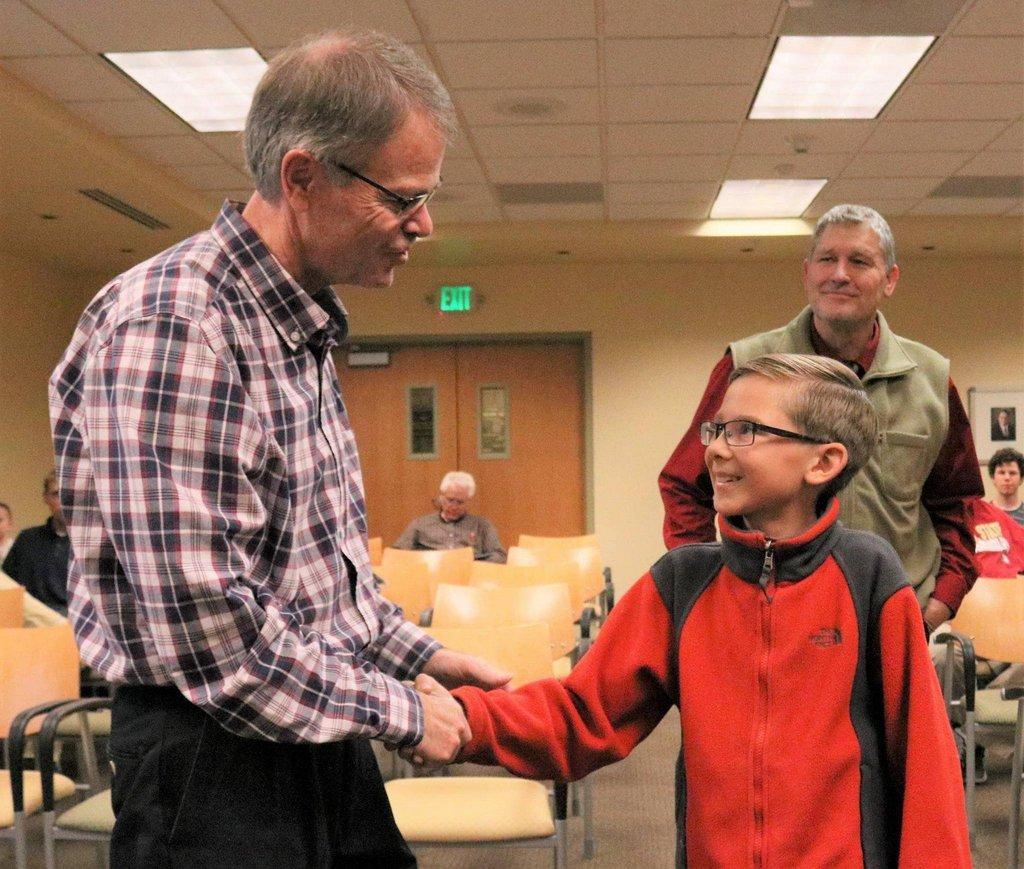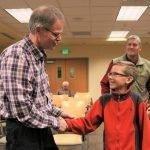Carbon School District Press Release
At the November Carbon School District Board of Education meeting, Levi Dimond of Creekview Elementary was honored because of a unique club he started at the school. It is called the Kindness Club. He said it was based on the fact he wants to see everyone be kinder to others around them.
“It is a unique thing to have a young student come up with such an idea,” said John Thomas, the school’s principal. “He worked hard on forming that club because he saw a need for it.”
The young man even created a video that talks about people being buddies and bullies. It can be seen at https://www.youtube.com/watch?v=YfgtYPpziMc
Creekview, like most schools, has been doing special things for the holidays as well. One of the things they have been doing is a Santa Workshop that has been sponsored by the PTA.
“They have put together a catalogue of all the things students can buy and then each student will buy a gift from it for someone else,” said John Thomas the Principal at the school. “It is meant to help the kids think of others and what they may want.”
He said they recently had an assembly where he and others talked about that it is better to give than to receive.
“We emphasized how people feel when they give something to others,” said Thomas. “Along with the gift, they have to write an appreciation card telling the person how much they appreciate them. The gifts are paid for out of PTA funds.”
The program was for everyone in the school and was not dependent upon scholastic or citizenship grades or grade levels.
Recently, a veteran of World War II also visited the school and talked to students about his recent trip on the Honor Flight. At 92 years old, Calvin Fox spoke to students about the Honor Flight program and how students can write letters to those that go on the flights. While the letters do not go to specific veterans, the students at the school all wrote letters to those that will go on future flights.
Earlier in the fall, the students also had another great experience. The Utah Museum of Contemporary Art sent an art truck to the school and the projects that the kids made were one of a kind under the sun.
Students received special paper that is treated so that when an object obscures the surface in the sun, all what isn’t covered fades in just a couple of minutes. Once students had been handed their small square of special paper, they placed objects that they picked out of a basket and a leaf off the school lawn on them and then they set them in the bright sunshine. A few minutes later, the covered part revealed some interesting shapes. Then, the students dipped the paper in two special pans of liquid, which changed the shapes and made them ever brighter.
“That is a process like the artist whose displays you seen displayed in the art van used to create the images,” said Erin Hartley, an art educator for the museum and who handles the traveling exhibition. “The truck is a traveling mini museum that we take around for kids to have a museum experience and teach them a new art form.”
The art inside the truck was by Celine Downen, who is from Utah and has created the display based on Pando, a grove of quaking aspen trees that exist in the Fishlake National Forest and is considered to be one of the oldest and largest living organisms in the world. She did it by drawing materials and botanical images from the forest, using a technique very similar to what the children were doing outside the van with their projects but on a bigger scale. Much of the art in the truck is done on fabric.
Before the students do the paper/object project, they come into the van and Hartley gives them a 20 to 30 minute lesson concerning art.
Hartley said that the art is done through a chemical action with the sun that can be used on paper, fabric or wood. The paper changes the colors in the sun and then when dipped in water and hydrogen peroxide, it changes it, very much like photography development. It creates shapes and shadow.
“The process creates some very unique images that are kind of abstract,” concluded Hartley.




